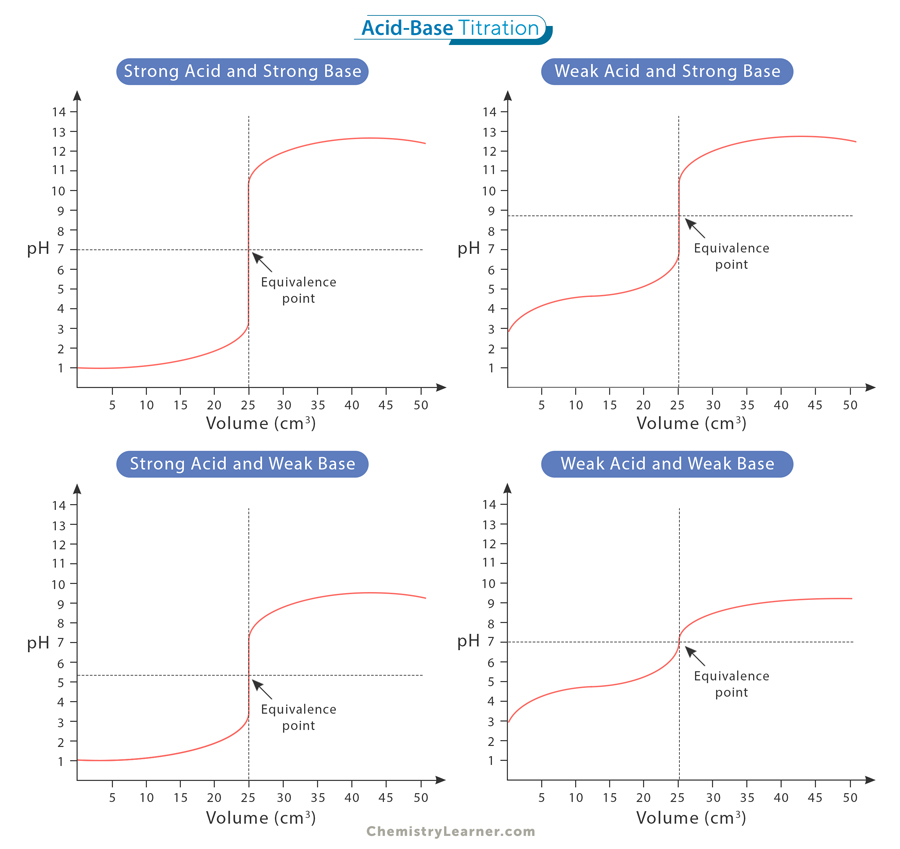Acid-Base Titration
An acid-base titration is a fundamental process in analytical chemistry to determine the concentration of unknown acids or bases. It is based on the neutralization reaction, where an acid and a base react to form water and a salt. This method allows scientists and chemists to measure the amount of one substance precisely by reacting it with a known quantity of another. The process is crucial in understanding the strength and concentration of various solutions, providing valuable insights into their chemical properties and enabling accurate quantitative analysis in multiple industries, from pharmaceuticals to environmental sciences. [1-4]
Theory
When free H⁺ and OH⁻ ions are present in a water-based solution, they unite to form water molecules (H2O), a process known as neutralization. When an acid and a base mix, they create a solution in water that contains a dissolved salt composed of the base’s cation and the acid’s anion. For instance, the combination of hydrochloric acid (HCl) and sodium hydroxide (NaOH) results in an aqueous solution of sodium chloride (NaCl), as represented by this equation: [1,2]
HCl + NaOH → NaCl + H2O
Acid-base titration involves the controlled addition of a solution with a known concentration (titrant) to a solution of the substance being analyzed (analyte). The goal is to reach the equivalence point, where the moles of the acid and base are stoichiometrically equal, leading to complete neutralization. This neutralization is indicated by a sudden change in the solution’s pH. By carefully monitoring this process and noting the volume of titrant required to reach the equivalence point, scientists can calculate the concentration of the unknown solution.
Indicators
The success of an acid-base titration hinges on carefully selecting indicators, which are substances that undergo distinct color changes at specific pH levels. Indicators play a crucial role in signaling the approach to the equivalence point, aiding in determining the endpoint of the titration. Indicators function by altering their molecular structure in response to variations in hydrogen ion concentration. It is accompanied by the transition from acidic to basic and vice versa. Common indicators, such as phenolphthalein or methyl orange, change color at different pH ranges, allowing chemists to visualize the transition and precisely pinpoint the endpoint. [1,4]
Types
Acid-base titrations come in various types, each tailored to analyze different combinations of acids and bases. The image below shows the different acid-base titration curves. [1-3]
1. Strong Acid-Strong Base
Strong acid-strong base titrations involve neutralizing a strong acid like hydrochloric acid with a strong base like sodium hydroxide. The reaction between these compounds is rapid and complete, reaching the equivalence point with a pH of 7. This type of titration serves as a foundational model due to its clear endpoint and predictable outcomes, making it a common starting point for students studying titration techniques.
2. Weak Acid-Strong Base
Weak acid-strong base titrations involve a weak acid, such as acetic acid, reacting with a strong base like sodium hydroxide. Unlike strong acid-strong base titrations, these titrations require careful consideration of equilibrium reactions. The equilibrium between the weak acid and its conjugate base influences the pH at the equivalence point, resulting in a slightly basic endpoint. Understanding the dissociation constants and equilibrium reactions becomes crucial for accurately determining the unknown concentration.
3. Strong Acid-Weak Base
In this titration, a strong acid, like hydrochloric acid, undergoes neutralization with a weak base, like ammonia. The strong acid, known for its complete dissociation in water, donates protons readily. At the same time, the weak base accepts these protons at a slower rate due to its partial ionization. Consequently, the equivalence point in this titration does not result in a neutral pH of 7 but rather in an acidic pH due to the excess of the undissociated weak base in the solution.
4. Weak Acid-Weak Base
Weak acid-weak base titrations are less popular than the other three. This type involves the titration of a weak acid, like acetic acid, with a weak base, like ammonia. There is not a steep change in the titration curve. The absence of significant pH shifts during titration makes it challenging to perform such titration, limiting the amount of information that can be derived from such a curve.
